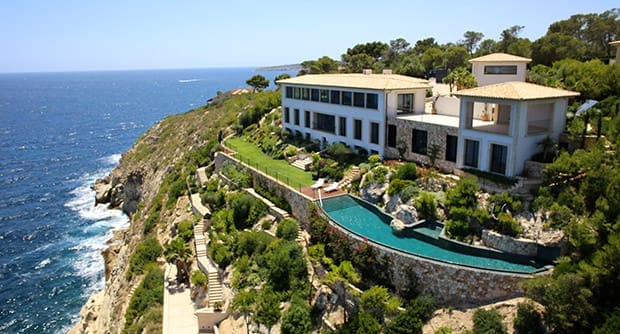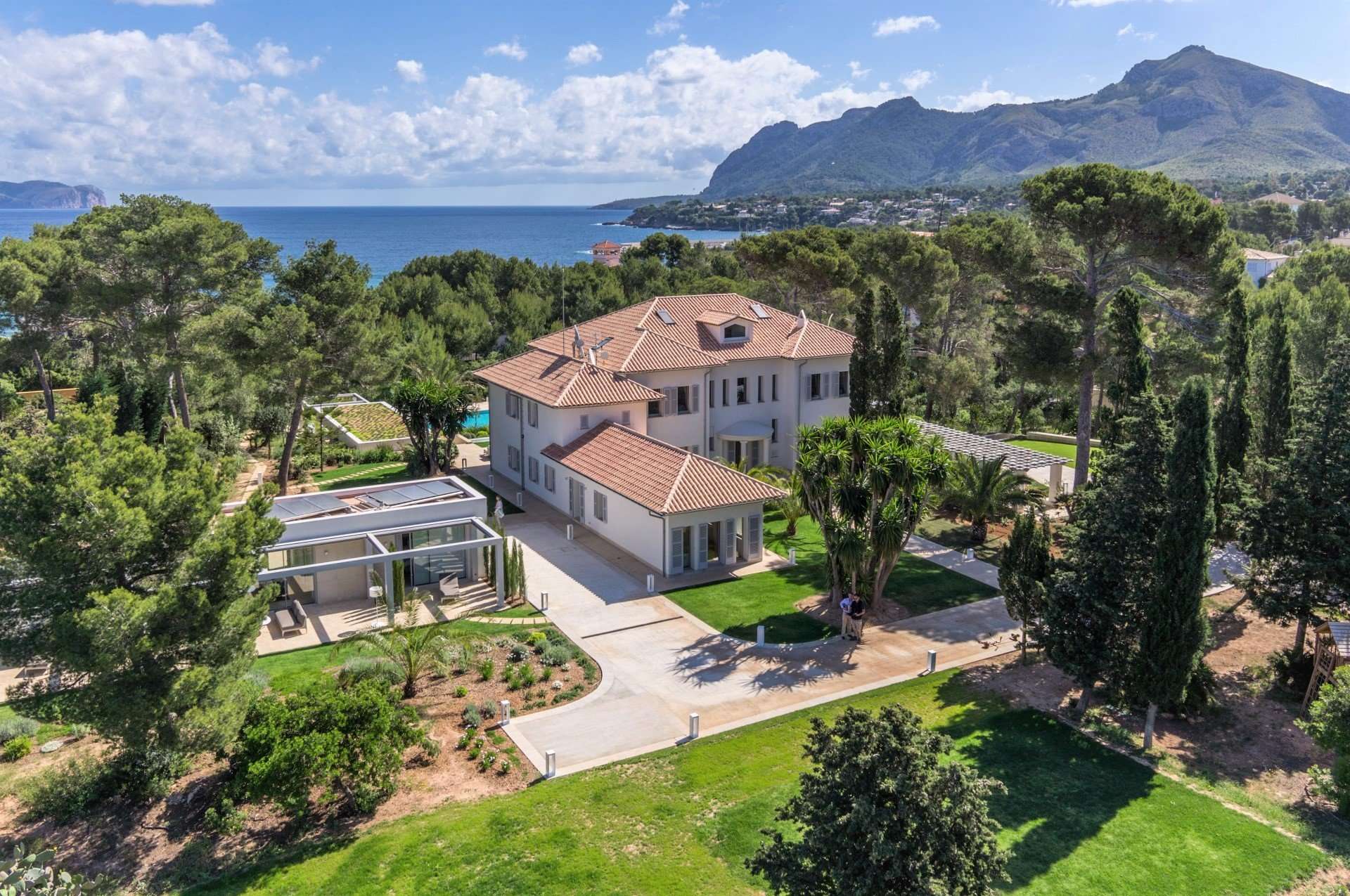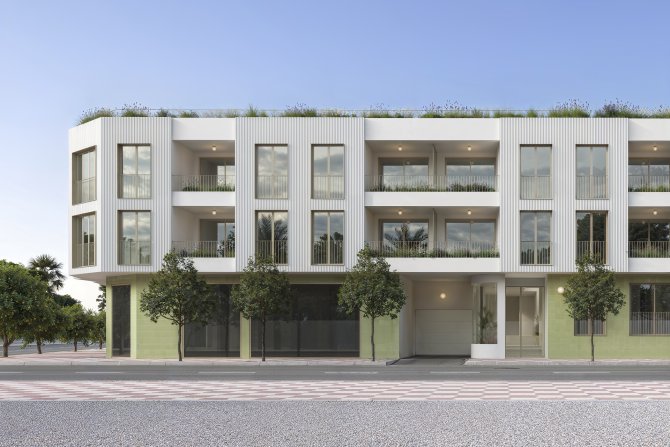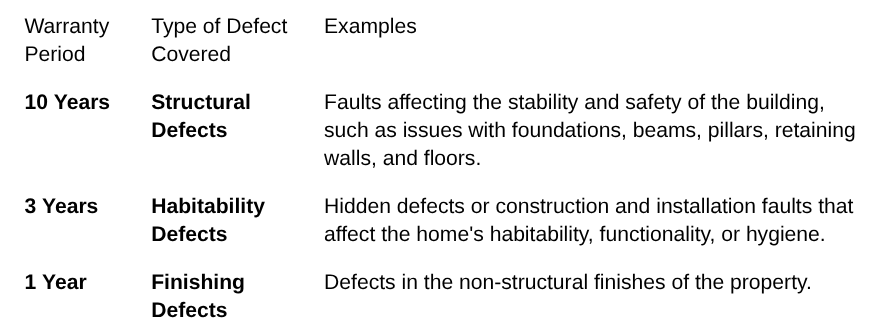Slowing sales in Spain, but prices will rise by 7% in 2026, according to BBVA Research
Friday, December 5, 2025
A new report from BBVA Research confirms the core reality of the Spanish property market: sales volumes are slowing due to a chronic lack of supply, but this same scarcity is forcing prices into a new phase of strong appreciation. The bank’s highly current "Real Estate Observatory" (November 2025) projects that while the overall number of transactions will stagnate in 2026 - forecasting a negligible -0.3% change - national housing prices are secured for another year of significant growth, projected to climb by 7.0% in 2026. This trend provides exceptional security for long-term investors: your asset value is insulated from any market fluctuation by an unstoppable structural deficit.
 This trend provides exceptional security for long-term investors. Photo: Unsplash
This trend provides exceptional security for long-term investors. Photo: Unsplash
Structural deficit & price growth in Spain
The reason behind this price acceleration is simple and structural: Spain cannot build fast enough to meet demand generated by strong employment, migration, and the appeal of buying over increasingly expensive renting.
The BBVA data confirms the severity of this fundamental imbalance:
- Cumulative housing deficit: Between 2021 and 2025, Spain accumulated a housing deficit of approximately 625,000 households whose housing needs were unmet by new construction.
- Price resilience: Despite the sharp nominal price rises, the price remains 30% below the 2007 bubble peak in real terms, confirming market recovery, not a speculative boom.
- Accelerating prices: This deficit drove prices up by a confirmed 9.7% in the first half of 2025, a momentum BBVA forecasts will lead to a 10.1% rise for the full year. This sharp growth sets the foundation for the stable 7.0% appreciation expected in 2026.
 Overall number of home sales will stagnate in 2026 - forecasting a negligible 0.3% change. Source: BBVA
Overall number of home sales will stagnate in 2026 - forecasting a negligible 0.3% change. Source: BBVA
Sales slowing down is viewed as healthy
The projected stagnation in sales for 2026 is actually a positive signal for the market's long-term health. It is not a sign of collapsing demand, but rather a confirmation that:
- Supply is exhausted: The market has simply run out of available inventory, especially quality, affordable stock in high-demand areas.
- Marginal demand is culled: The steep rise in prices means that marginal buyers, often those highly sensitive to mortgage rates and dependent on full financing, are being priced out. This culls speculative demand and leaves the market in the hands of secure, long-term investors.
Read more at thinkSPAIN.com
 1
Like
Published at 5:44 PM Comments (0)
1
Like
Published at 5:44 PM Comments (0)
What are the benefits of moving to Spain to retire?
Wednesday, November 26, 2025
As anyone who has already done it will tell you, spending your retirement in Spain offers plenty of benefits in terms of physical and mental health, and general wellbeing. You may also find doing so comes with financial benefits too, depending upon where you are moving from.
Spain remains one of the most popular destinations for those seeking a change of scenery once their working lives end and they can enjoy endless free time at last – but what makes it so sought-after?
Here are some of the features of Spain that lead thousands of new pensioners to set up home here every year:

Retiring in Spain offers plenty of benefits in terms of physical and mental health. Photo: GettyImages
Climate
One of the key reasons for choosing a retirement in Spain is the climate, particularly on the islands, in the south and on the Mediterranean. On average, year-round temperatures are higher than in central and northern Europe, winter daylight hours are longer, and sunshine is abundant. In fact, even when the weather is cool, it is often still sunny, meaning a constant and free source of vitamin D – essential for bone and immune system health.
Some new pensioners considering moving to Spain may have concerns that it could, in reality, be too hot. Whilst it is true that the main summer months, from approximately June to September, can be extremely hot with temperatures well above 30ºC and high humidity, this is not the case all year round. Winters normally require a coat, but biting cold is rare at sea-level, and spring and autumn are mild, without being hot.
Much of Spain is at an altitude, given that it is the second-most mountainous country in Europe after Switzerland, meaning cold weather and even snow are possible in inland areas. Here, most homes are built with central heating as standard, and older properties frequently have wood-burning stoves and chimneys. On the coasts and islands, though, very little winter heating is needed, and air-conditioning units double up as heaters for those few weeks a year when it is.
All this means your winter heating costs are likely to be much lower than in central or northern Europe, but you may need to use your air-conditioning a lot in summer.
Lifestyle and culture
Thanks to the mild weather in spring, autumn and winter, life in Spain takes place outdoors far more than in colder countries. The benefits of this are obvious: Fresh air, vitamin D, and greater contact with other people, helping to combat isolation. Also, it means you can always find 'something to do' that doesn't have to cost money: In colder climates, wanting to get out of the house and enjoy a 'change of scenery' normally involves finding an indoor pursuit, such as shopping. In most of Spain and for most of the year, you can simply sit in a pavement café and watch the world go by, or go out for a walk on the beach, in the countryside or around town.
Despite common misconceptions, the pace of life in Spain is not necessarily slower, more relaxed, or less hassle than in any other first-world country – but it is much easier, in Spain, to simply 'be' rather than 'do'.
It's actually hard to get bored in Spain, because there's always something happening and a lot of it costs little or nothing. Nearly every town celebrates its patron saint fiestas once a year, which go on for several days and include vibrant, colourful processions, live music, street theatre, concerts, fêtes, and themed markets. Fiestas also take place during other key dates such as Easter or on the 'regional day' for wherever you live. In between these, craft markets, shopping and trade fairs, and open-air music shows are frequent, especially in summer, providing a constant backdrop of entertainment that anyone can enjoy. Spain has a very strong arts and culture scene, with almost all children learning to play at least one musical instrument at school, and its outdoor lifestyle means all ages of Spaniards get heavily involved in sports. Even if you're not keen on or able to take part in them yourself, public sporting events are a regular feature of Spanish life, and a great source of spectator entertainment.
Much of the day-to-day culture in Spain revolves around food. The country holds the record for the highest number of bars and restaurants per inhabitant in the world, meaning wherever you are, there'll be somewhere to stop for a coffee, a cool drink or a snack within a few paces. Eating out is not necessarily considered a luxury in Spain – it can be, and the high number of Michelin-starred restaurants nationwide is testimony to that – but it can also simply be an alternative to cooking at home.
Spain remains one of the most affordable countries in the developed world for eating and drinking outside the home, and its cuisine is so widely varied that you may find completely different dishes even between neighbouring towns. All regions have vastly different 'traditional' recipes – to such an extent that many Spaniards are surprised by the food when they travel elsewhere in their own country.
Read more at thinkSPAIN.com
 2
Like
Published at 8:08 PM Comments (1)
2
Like
Published at 8:08 PM Comments (1)
Global capital confirms Spain as Europe’s investment leader
Wednesday, November 26, 2025
The Spanish real estate market is generating excitement across global financial centres. Leading reports from international firms confirm that Spain is recording the largest upturn in property investment across Europe, firmly positioning the country as the continent’s leading safe haven for capital deployment in 2025.
This surge is not just a recovery; it’s an acceleration. While other major European markets face slow growth and uncertainty, Spain's investment landscape is projected to hit a colossal €16 billion in 2025. Spain has recorded the third-highest volume of real estate investment in the first nine months of 2025, behind only 2022 and 2018. As of the close of Q3, real estate investment in Spain had already reached 12.9 billion euros, 44% more than in the same period of 2024. A 20% growth in investment is expected by the end of the year, compared to last year. This powerful institutional confidence directly validates the long-term prospects for individual foreign buyers.

Madrid overtakes Paris as Europe’s second most attractive city for real estate investment. Photo: Unsplash
The structural advantage explained
Institutional investors are prioritising Spain because its growth is fundamentally sound, mitigating the volatility inherent in other major European markets. Spain's 20% investment forecast is highly compelling for three key reasons:
- Low volatility, high quality: Unlike some economies seeing high percentage rebounds from severely depressed asset values, Spain experienced less dramatic asset value decline during recent economic headwinds. The 20% growth here is seen as high-quality, structural growth, built on resilient fundamentals. Investors choose this stability over the riskier volatility, driving larger recovery figures elsewhere.
- Structural housing deficit: Spain suffers from a severe housing deficit—a chronic shortage of homes relative to demand driven by population growth and new household formation. This imbalance, which major institutional capital views as a permanent feature of the market, guarantees continued capital appreciation and rental income stability for the foreseeable future.
- Liquidity and returns: Spain offers compelling total returns (capital appreciation plus rental yield) that exceed 7% (in areas such as Valencia) in 2025, according to analysts. The market is recognised as highly liquid, meaning assets are easier to buy and, crucially, easier to sell—a major concern for large global funds.
The conclusion for investors is simple: The smart money chooses structural safety. Spain is the clear "leader in preference" for capitalising on Europe's economic rebound.
The prestige factor: Madrid eclipses Paris
The transformation of Spanish cities into global investment magnets is perhaps the most powerful signal of long-term stability. Price Waterhouse Coopers' Emerging Trends in Real Estate Report for 2025 has officially cemented Madrid's status as Europe’s second most attractive city for real estate investment, surpassing Paris. According to CBRE's Investor Sentiment Survey, Spain was the only country in Europe to place two cities—Madrid and Barcelona (ranked fourth)—in the top four, demonstrating nationwide market depth and consensus among major real estate analysts.
Read mroe at thinkSPAIN.com
 0
Like
Published at 8:00 PM Comments (0)
0
Like
Published at 8:00 PM Comments (0)
Rural living close to the Costa: Cheap country houses in Málaga
Friday, November 21, 2025
Rural tranquillity and the Costa del Sol would not seem to go hand in hand when choosing your ideal location in Spain. But what if we told you that you could have both – and at a price well below the national average for a modest town flat? Cheap country houses in Málaga province could be the answer if you seek peace and quiet, privacy, space and clean air, yet are reluctant to relinquish the convenience of urban life altogether. This option offers a balance: Nature and serenity at home, but a lively holiday atmosphere and established expatriate community a short drive away if ever you want or need them – all this for less than €200,000.

Nature, privacy and clean air, a short drive from the convenience of urban life - a country house in Málaga province offers an ideal balance. Photo: Unsplash
Types of country houses in Málaga
'Country houses', in Spain, is a definition that covers a multitude of property types. Many come with plenty of land. Some are quite distant from the nearest town; others are in the heart of a village with most necessary amenities at hand.
Your Málaga country house might be a blank canvas: A renovation project you can adapt to your taste, instantly increasing the value. Or it could already be renovated with modern fixtures, a swimming pool and fully-landscaped garden and terrace. It's perfectly possible to find these at affordable prices, too.
Cheap country houses in Málaga province might be described as a finca. This actually just means a 'piece of property', be it a building or empty plot, but which in everyday speak is often used to refer to a detached rural home of traditional design. In the southern region of Andalucía, which Málaga forms part of, larger country houses, especially with farmland and outbuildings, are frequently known as cortijos.
Where to find cheap country houses in Málaga
While beachfront bargains are rare, head just a few kilometres inland and you’ll find a wide range of affordable country homes in Málaga province. These properties often come with more space, privacy, and natural surroundings than coastal homes, all at a much lower price point.
Read more at thinkSPAIN.com
 1
Like
Published at 10:45 PM Comments (0)
1
Like
Published at 10:45 PM Comments (0)
Spain ranked #1 in the world for Digital Nomads in 2025
Friday, November 21, 2025
Spain's popular "Digital Nomad Visa" (DNV) has become a major topic for remote workers globally. This special visa allows non-EU professionals to legally reside in the country while continuing their remote work for foreign companies or as entrepreneurs—combining the freedom of a digital lifestyle with the advantages of living in one of Europe’s most vibrant destinations.
Now, in the most comprehensive study of its kind, that visa has been officially validated. The Global Citizen Solutions "Global Digital Nomad Report 2025" has ranked Spain as the #1 destination in the world for remote workers.
Spain's victory in this prestigious index, which analyses the world's most popular nomad visas, is a testament to its perfect blend of lifestyle, infrastructure, and excellent accessibility. This ranking confirms Spain's status not just as a top retirement or holiday destination, but as the leading choice for the new generation of mobile, affluent professionals.

It's Official! Spain ranks #1 in the world for Digital Nomads. Photo: Unsplash
How Spain won the top spot
The Global Digital Nomad Report analyses countries across a wide range of metrics, and Spain’s success lies in its high scores across the board. It is the country that delivers the "total package" and is now the best in the world.
Spain excelled in key areas for digital nomads:
Read more at thinkSPAIN.com
 2
Like
Published at 10:34 PM Comments (2)
2
Like
Published at 10:34 PM Comments (2)
Spanish Property Market- 2025 Q3 Review: Accelerated Growth
Friday, November 7, 2025
Building on the Q2 review, the Spanish residential real estate market experienced intense, accelerated growth in the third quarter of 2025, largely outperforming many of its European peers. This buoyant performance confirms the market's transition into a full upward cycle, characterised by significant price hikes, particularly in popular urban centres and tourist hotspots.

Spain's property market in Q3 2025 reflects an ongoing and even intensifying boom. Photo: Pexels
The market momentum is primarily fueled by a potent combination of robust demand - now nearing post-financial crisis highs - and a structural deficit in the housing supply. While the strong price appreciation offers opportunities for investors, it simultaneously amplifies the acute challenge of affordability for the average Spanish household. For expats considering a move, investment, or property purchase, understanding these intense regional variations and financial metrics is more critical than ever. The headline figures for Spain's property market in Q3 2025 reflect an ongoing and even intensifying boom, affecting both new and existing homes. These price increases were strong enough to accelerate the market's trajectory compared to the previous quarter.
National price movement in Spain 2025
The average price of finished homes (covering both newly constructed and resale properties) across the entire country saw a significant leap in value, as reported by the Tinsa IMIE Local Markets index:
- Year-on-Year (YoY) Change: The national average price increased by +11.7% in nominal terms compared to Q3 2024.
- Quarter-on-Quarter (QoQ) Change: Prices rose by +3.0% compared to the second quarter of 2025.

Interannual variances in recent quarters in Spain from Q4 2024 to Q3 2025. Source: Tinsa
- Real Growth: Crucially, even after adjusting for the effects of inflation (known as deflating the value), the Spanish property price experienced a +8.6% real growth. This figure indicates that property is genuinely becoming more expensive, not just keeping pace with general inflation. The mean value of residential property now stands at €2,018/m².
Regional growth intensifies in Spain
The strong momentum of the Spanish property market in Q3 2025 has led to a broadening of high growth rates across the country. Price growth is generalised across Spain, but the most intense rises are concentrated in regions driven by two key factors: employment poles and tourist centres. This spread is evidenced by the rapidly growing number of provinces registering double-digit annual growth (13 provinces), marking a notable increase from the nine provinces that had achieved this threshold in the previous quarter.
Read more at thinkSPAIN.com
 1
Like
Published at 8:05 PM Comments (0)
1
Like
Published at 8:05 PM Comments (0)
The Balearic Islands Cement Their Status as Spain's Most Exclusive Property Market
Friday, October 17, 2025
The Balearic Islands have once again affirmed their position as the priciest province in Spain for purchasing residential property, with average prices for second-hand homes consistently exceeding the €5,000 per square metre mark.

According to data for August 2025, the archipelago remains highly coveted by both domestic and international buyers, driving the average cost of properties to unprecedented levels. The islands recorded an impressive 12.3% annual price increase, slightly below the national average but reflecting a relentless surge in demand that continues to push local real estate records.
Record Prices in Palma and Across the Archipelago
The capital city, Palma de Mallorca, has been a significant driver of this growth, experiencing a substantial 17.2% annual increase. This spike has pushed the average price for a second-hand home in Palma to €5,006/m², firmly placing it among the most expensive cities in the country.
Overall, the high demand has resulted in record prices being reached in 25 municipalities across Mallorca, Ibiza, and Menorca. However, the most exclusive markets are found primarily on the island of Ibiza.
Ibiza Dominates the Top Tier
The most expensive municipality in the entire province is Sant Joan de Labritja in Ibiza, where the average price per square metre now stands at a staggering €8,959. This area, along with others on the island, constitutes the pinnacle of Spanish luxury real estate.
The top five most expensive locations are:
-
Sant Joan de Labritja (€8,959/m² | +13.0% annual change)
-
Sant Josep de Sa Talaia (€7,367/m² | +6.4% annual change)
-
Sant Antoni de Portmany (€6,927/m² | +19.6% annual change)
-
Calvià (Mallorca) (€6,925/m² | +8.7% annual change)
-
Ibiza Town (€6,879/m² | +3.0% annual change)
Surge in Dynamic Growth Areas
While the established hotspots maintain their high values, several municipalities are experiencing explosive price appreciation. Colonia de Sant Pere saw the most dramatic annual rise, with prices skyrocketing by 37.5%. Other areas showing dynamic market growth include Felanitx (+30.2%), Inca (+26.4%), and Muro (+23.1%).

Noteworthy growth was also recorded in Sant Antoni de Portmany, which experienced the sharpest increase among the top five most expensive locales at 19.6%.
For foreign investors and expatriates, these figures underscore the premium nature and dynamic market conditions of the Balearic Islands. With prices climbing rapidly across Mallorca, Ibiza, and Menorca, the region continues to offer a compelling mix of luxury living, Mediterranean lifestyle, and solid, high-yield investment potential. Prospective buyers should be prepared for a competitive market environment in Spain's most desirable island province.
 2
Like
Published at 9:19 PM Comments (0)
2
Like
Published at 9:19 PM Comments (0)
New-Build Warranty in Spain: What It Covers and How Long It Lasts
Saturday, October 11, 2025
Buying a brand-new property in Spain is an exciting prospect, but like any new construction, unexpected issues—from minor finishing defects to serious structural faults—can sometimes arise. Fortunately, Spain’s legal framework provides comprehensive protection for new homeowners through the mandatory new-build warranty, governed by the Building Regulations Act (LOE).

Understanding the duration and scope of this guarantee is crucial for any new homeowner. Here is a breakdown of what the Spanish new-build warranty covers and the deadlines for making a claim.
The Three Tiers of Warranty Coverage
The length of the warranty period in Spain is determined by the severity and type of defect, with all periods starting from the date the construction company officially delivers the work (not the date the property is purchased).

Crucial Point: Homeowners have an additional claim period. Regardless of the time left on the above warranties, buyers have up to two years from the moment they discover a defect to officially request its repair.
Making a Claim: Process and Best Practices
If you discover a defect, you must make a claim against the developer or any other party involved in the construction.
1. Establish Causation
A claim is only valid if there is a clear causation linking the defect directly to the construction process. A crack appearing in a pillar within the first few years is clearly attributable to construction, whereas the same issue appearing after several decades may be difficult to prove and more likely attributed to inadequate maintenance.
2. Notify the Developer
It is strongly advised to report these defects using a method that provides a reliable, verifiable record, such as a burofax (a certified communication service in Spain). This document serves as indispensable evidence should the issue escalate and require legal action.
3. Know Your Legal Deadlines
While the two-year period to act after discovering a defect is key, you must be careful with timing. If you send a burofax reporting a defect within the first year but fail to initiate legal action within two years of discovery, your right to claim for that specific defect is lost. You can, however, still make claims for any issues that arise subsequently.
Responsibility and Common Areas
Who is Responsible for the Repairs?
Responsibility is shared among all agents involved in the building process, including:
- The developer (promoter)
- The construction company
- Architects and surveyors
- Finishing contractors
While the developer typically assumes the bulk of the initial repair costs, they reserve the right to seek recovery from the specific agent (e.g., the plumber or architect) found responsible for the faulty work.
Dealing with Defects in Common Areas
If the damage is found in common areas (such as the facade, roof, community gardens, or shared electrical systems), the Community President or the Property Manager is responsible. Their role is to compile a comprehensive list of all defects and officially request rectification from the developer on behalf of the entire community.
The Developer's Claim Process
Developers usually have a streamlined process for handling new-build defect claims:
- Reception and Analysis: The developer receives and reviews the official claim.
- Technical Inspection: A technician is dispatched to the property to assess and verify the reported defects.
- Detailed Report: The technician prepares a full report documenting the condition and cause of the defects.
- Evaluation and Resolution: The developer decides whether to accept or reject the claim. If accepted, repairs are scheduled. If rejected, the homeowner or community may need to pursue legal action.
While legal proceedings can be lengthy and involve extra costs (solicitor’s fees, expert reports), a ruling in your favour will require the developer to cover the legal costs and carry out the necessary repairs.
Ultimately, the Spanish new-build warranty provides a robust safety net, giving buyers peace of mind and clear timeframes for ensuring their new investment meets the required standards of quality and safety.
 2
Like
Published at 10:19 AM Comments (0)
2
Like
Published at 10:19 AM Comments (0)
Moving to Málaga: Your essential guide to life on the Costa del Sol
Friday, October 3, 2025
This guide will give you a comprehensive overview of living in the vibrant province of Málaga, a true gem of Andalucía and home to the famous Costa del Sol. Whether you're a remote worker seeking sun and a new environment, a family looking for a new life, or a retiree, this guide will provide essential information for anyone considering moving to this part of Spain.

The Málaga region caters for all tastes, from city to country locations with excellent transport services
Best places to live on the Costa del Sol
The province of Málaga is a diverse area, with the bustling city of Málaga at its heart and the world-renowned Costa del Sol stretching along its coastline. The Costa del Sol is home to many popular towns and villages, each offering a unique lifestyle.
- Málaga City: The city of Málaga is a vibrant and culturally rich hub, often referred to as the "Silicon Valley of the Costa del Sol" due to its thriving tech and startup scene. The historic centre is a must-see, and the city boasts a modern port and a beautiful urban beach, Malagueta beach.
- Marbella: Known for its luxury, Marbella is a top destination on the Costa del Sol. It offers a glamorous lifestyle with high-end restaurants, boutiques, and exclusive beach clubs. It's a popular choice for expats seeking an upscale life.
- Estepona & Fuengirola: These coastal towns offer a more traditional Spanish feel while still catering to an international crowd. They have beautiful beaches and a lively atmosphere, and are popular choices for families and those looking for a more relaxed coastal life.
- Nerja: Located at the eastern end of the Costa del Sol, Nerja is famous for its "Balcón de Europa" viewpoint and the stunning Nerja Caves. It's a picturesque town that offers a perfect balance of natural beauty and cultural richness.
- Inland villages: The province also has charming white-washed villages in the mountains, such as Mijas, Ronda, and Frigiliana. These areas offer a peaceful, traditional Andalusian life away from the hustle and bustle of the coast.
- Other Notable Areas: Other areas worth considering include Soho, Málaga's art district known for street art, and Teatinos, the modern university district popular with young professionals and students. La Malagueta is a prime beach district, while El Perchel is an older, working-class district known for its fresh seafood.
For a more detailed breakdown of the different towns and cities, check out our article on The best areas in Costa del Sol for expats.
Population and popular expat areas
Málaga province is a very popular destination for expats, with a large and well-established international community. You'll find a significant number of English and German-speaking expat residents, particularly in areas like Marbella, Mijas, and Fuengirola. This makes the transition to a new life in Spain a bit easier, as many services are available in English. This is also a huge benefit when it comes to social life, as it's easy to connect with other expats and find community. Málaga's expat population includes a high number of British and German nationals as well as many others, and the overall population of the city is around 587,000.
As of July 1, 2025, the population of Malaga province stands at 1,798,265 inhabitants, making it the sixth most populous province in Spain. The province has experienced significant growth, adding 14,451 residents over the past year, with a notable increase of 4,155 people in the first quarter of 2025 alone. This growth is primarily driven by foreign migration, as the number of foreign-born individuals now represents 24.3% of the total population, a figure well above the national average.
Read more at thinkSPAIN.com
 1
Like
Published at 4:56 PM Comments (0)
1
Like
Published at 4:56 PM Comments (0)
Government announces a 30,000-euro rent-to-buy aid scheme
Friday, September 19, 2025
The Spanish government has announced a new State Housing Plan for 2026-2030, a comprehensive set of measures designed to tackle the country's ongoing housing crisis. The centerpiece of this plan is a new aid package of up to €30,000 for young people under the age of 35, aimed at helping them get on the housing ladder through a rent-to-buy scheme.

Rent-to-Buy and Anti-Speculation Measures
This flagship initiative allows monthly rent payments to be counted as an advance towards the eventual purchase of a home. The aid will be applied to properties designated as "permanently protected" housing. This critical detail means their price is capped and cannot be freely set by the seller at market rate. If the property is resold in the future, it must be at a regulated price and only to another person who meets the same eligibility requirements. This is intended to protect state-funded housing from market speculation and ensure its long-term affordability.
Broader Housing Initiatives
In addition to the rent-to-buy scheme, the plan introduces several other key initiatives:
-
Rental Default Insurance: The government will act as a guarantor for young tenants, which is designed to provide security for landlords and make them more willing to rent their properties to young people. This insurance will cover monthly payments that do not exceed 50% of the tenant's net income.
-
Rural Home Purchase Grants: To combat depopulation in less-populated areas, the plan offers grants of up to €10,800 for young people who purchase homes in municipalities with fewer than 10,000 inhabitants. This grant can cover up to 20% of the property's purchase price.
-
Increased Regional Funding: The central government has pledged to triple its housing budget transfers to regional authorities. The catch is that regions must also commit to promoting social housing to receive this funding. This could lead to a combined investment of €7 billion over the next five years.
Political Context and Criticism
Prime Minister Pedro Sánchez announced these measures as a direct and firm step forward in housing policy, aimed at making it easier for young people to achieve financial independence and access affordable housing. However, the plan has faced some criticism. Second Deputy PM and Minister of Labour, Yolanda Díaz, has argued that focusing on rental assistance is not the most effective approach, as it could simply transfer funds into landlords' pockets rather than directly addressing the root cause of high prices. She contends that the more urgent need is to lower rental prices across the board.
 1
Like
Published at 11:14 PM Comments (0)
1
Like
Published at 11:14 PM Comments (0)
Spam post or Abuse? Please let us know
|
|